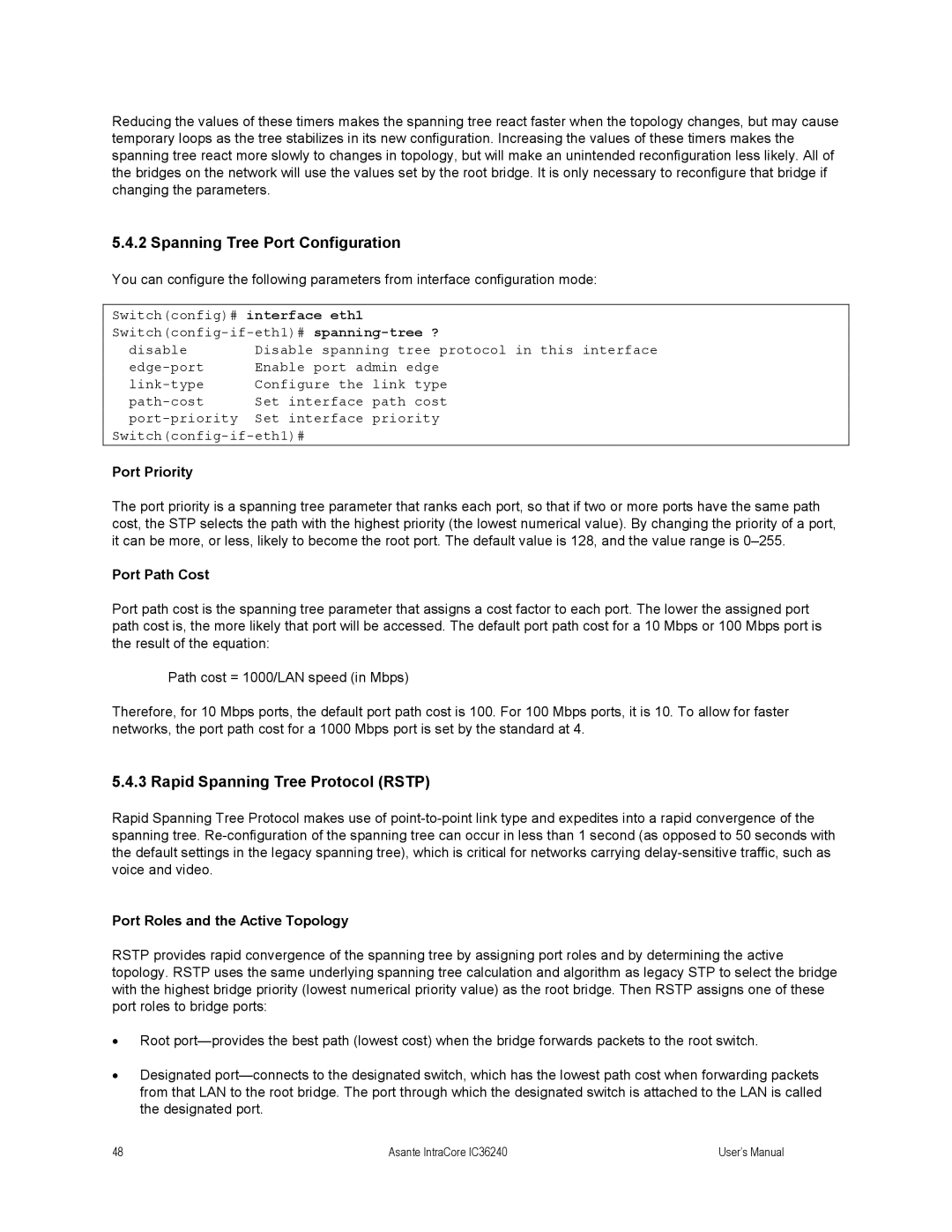
Reducing the values of these timers makes the spanning tree react faster when the topology changes, but may cause temporary loops as the tree stabilizes in its new configuration. Increasing the values of these timers makes the spanning tree react more slowly to changes in topology, but will make an unintended reconfiguration less likely. All of the bridges on the network will use the values set by the root bridge. It is only necessary to reconfigure that bridge if changing the parameters.
5.4.2 Spanning Tree Port Configuration
You can configure the following parameters from interface configuration mode:
Switch(config)# interface eth1
disable | Disable spanning tree protocol in this interface | |||
Enable port admin edge | ||||
Configure the | link | type | ||
Set | interface | path | cost | |
Set | interface | priority | ||
Port Priority
The port priority is a spanning tree parameter that ranks each port, so that if two or more ports have the same path cost, the STP selects the path with the highest priority (the lowest numerical value). By changing the priority of a port, it can be more, or less, likely to become the root port. The default value is 128, and the value range is
Port Path Cost
Port path cost is the spanning tree parameter that assigns a cost factor to each port. The lower the assigned port path cost is, the more likely that port will be accessed. The default port path cost for a 10 Mbps or 100 Mbps port is the result of the equation:
Path cost = 1000/LAN speed (in Mbps)
Therefore, for 10 Mbps ports, the default port path cost is 100. For 100 Mbps ports, it is 10. To allow for faster networks, the port path cost for a 1000 Mbps port is set by the standard at 4.
5.4.3 Rapid Spanning Tree Protocol (RSTP)
Rapid Spanning Tree Protocol makes use of
Port Roles and the Active Topology
RSTP provides rapid convergence of the spanning tree by assigning port roles and by determining the active topology. RSTP uses the same underlying spanning tree calculation and algorithm as legacy STP to select the bridge with the highest bridge priority (lowest numerical priority value) as the root bridge. Then RSTP assigns one of these port roles to bridge ports:
•Root
•Designated
48 | Asante IntraCore IC36240 | User’s Manual |
